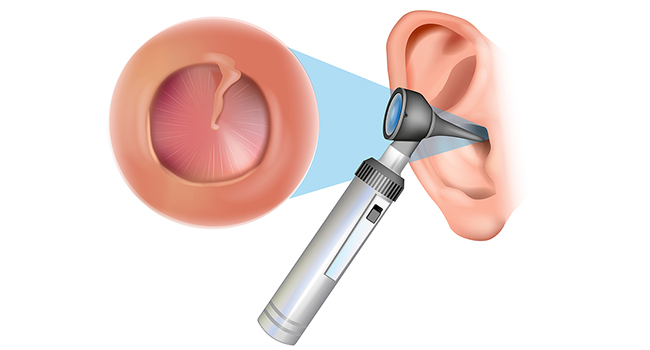
Otitis media with effusion (OME) is a condition where fluid builds up in the middle ear, usually without any signs of infection or inflammation. It is sometimes called "glue ear" because the fluid may become thick and sticky. OME can be caused by various factors, including allergies, changes in air pressure (such as during air travel), and inflammation of the Eustachian tube, which connects the middle ear to the back of the nose and throat.
The symptoms of OME can include mild to moderate hearing loss, a feeling of pressure or fullness in the ear, and sometimes mild pain or discomfort. However, many people with OME have no symptoms at all. Treatment for OME may include watchful waiting, antibiotics (if there is an underlying infection), or surgical intervention to drain the fluid or insert a ventilation tube (also known as a "grommet" or "tympanostomy tube") to help equalize pressure and prevent future fluid buildup.
Aerosol drug administration is the primary treatment for OME, and the automatic manosonic aerosol generator (AMSA) (manosonic nebulizer) is a device that delivers therapeutic doses of drugs to the middle ear by inhalation of an aerosol. However, there is limited research on the efficacy of AMSA treatment, particularly in adults. This pilot single-arm clinical trial aimed to assess the changes in adults with OME following treatment with AMSA.
The study included 36 patients with OME who received a three-day treatment with inhaled mucolytic and steroids administered by AMSA. Tympanometry was performed to measure middle ear effusion before and after the intervention. Tympanometry is a test that measures the eardrum's movement in response to changes in air pressure. The results showed that partial and complete OME remission was observed in 81% and 39% of patients, respectively. Following the intervention, an increase in middle ear volume and pressure and a higher proportion of patients achieving categorical normalization of compliance and pressure were observed.
The study found that treatment efficacy was not affected by age, sex, or recruitment season. However, the use of AMSA management of OME in adults must be verified in future studies. While the results of this pilot study are encouraging, further research is required to validate the efficacy of AMSA treatment in a larger sample size and randomized controlled trials.
Conclusion
This study provides preliminary evidence that AMSA treatment may effectively manage OME in adults. The device can deliver therapeutic doses of drugs directly to the middle ear, resulting in partial or complete remission of OME. While the findings are promising, further research is required to confirm the efficacy of AMSA treatment and establish its role in managing OME in adults.
__________

